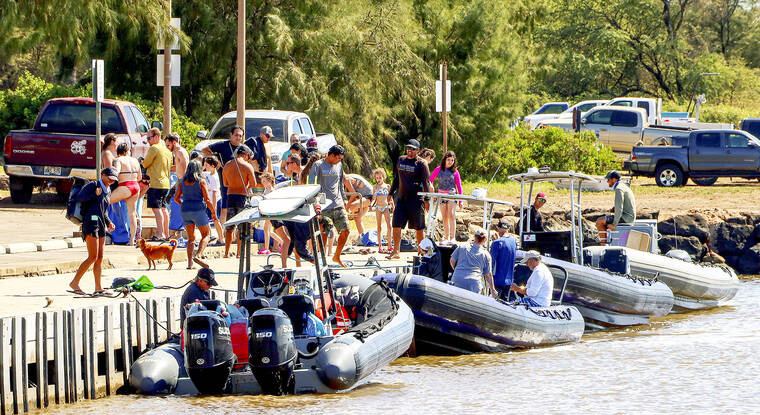LIHU‘E — The Hawai‘i Tourism Authority presented its winter tourism update last week with optimistic predictions that 2022 international travel will improve significantly from last year.
Data from 2021 showed a deficit from pre-pandemic levels in overall spending.
Primary data released by HTA showed that visitor spending last year was down $4.12 billion from pre-pandemic 2019.
While visitors from the U.S. were slightly up, overall visitor spending took a hit because of a decline in international tourists.
Last year, less than 5% of visitors were from international points of departures, compared to about 46% of visitors in 2019.
Many international HTA representatives reported that international flights to Hawai‘i from target countries will increase significantly through the spring and into summer.
In preparing for a comeback of international tourism, HTA is targeting groups that will share in malama, or caring and protecting, the natural and cultural resources of Hawai‘i. In some respects, that looks like offering volunteer opportunities like beach clean-ups.
Representatives from HTA Canada, Oceania, Japan, China and Korea shared strategic plans. Common themes emerged, including targeting affluent travelers who value access to natural resources, outdoor activities and have an appreciation of other cultures. Helping tourism recover in the most-pono way possible was on several presenters’ agendas.
“HTA understands we need to recover this market as soon as we can in the most-proper way possible,” said Eric Takahata, HTA Japan managing director. “The malama Hawai‘i message will be front and center in everything that we do.”
In several countries, efforts including social media and influencer campaigns will be used target “mindful millennials” with disposable incomes — described as DINKS and SINKS (“dual income, no kids” and “single income, no kids,” respectively).
Other efforts from international HTA offices include visitor-education campaigns focused on promoting made-in Hawai‘i product shopping and publishing children’s books about caring for the land and bringing them into the schools.
For HTA, this is a long-term strategy.
“The education that comes with (the malama campaign) helps us to shape the expectations the visitor has before they even arrive,” said HTA Chief Brand Officer Kalani Ka‘ana‘ana. “As we start to reposition the Hawaiian Islands in the minds of those travelers, we start to see the changes that we’re hoping for. It’s a long-term strategy. It will take time to educate folks.”
HTA President and Chief Executive Officer John De Fries responded to community members calling for visitor numbers to be capped.
“I empathize with people who feel strongly about certain levels of caps,” said De Fries. “(But) we cannot just be focused on what we don’t want. In 2019, we generated north of $2 billion in state tax revenue, and the state depends on it.”
•••
Laurel Smith, staff writer and photographer, can be reached at 245-0424 or lsmith@thegardenisland.com.




